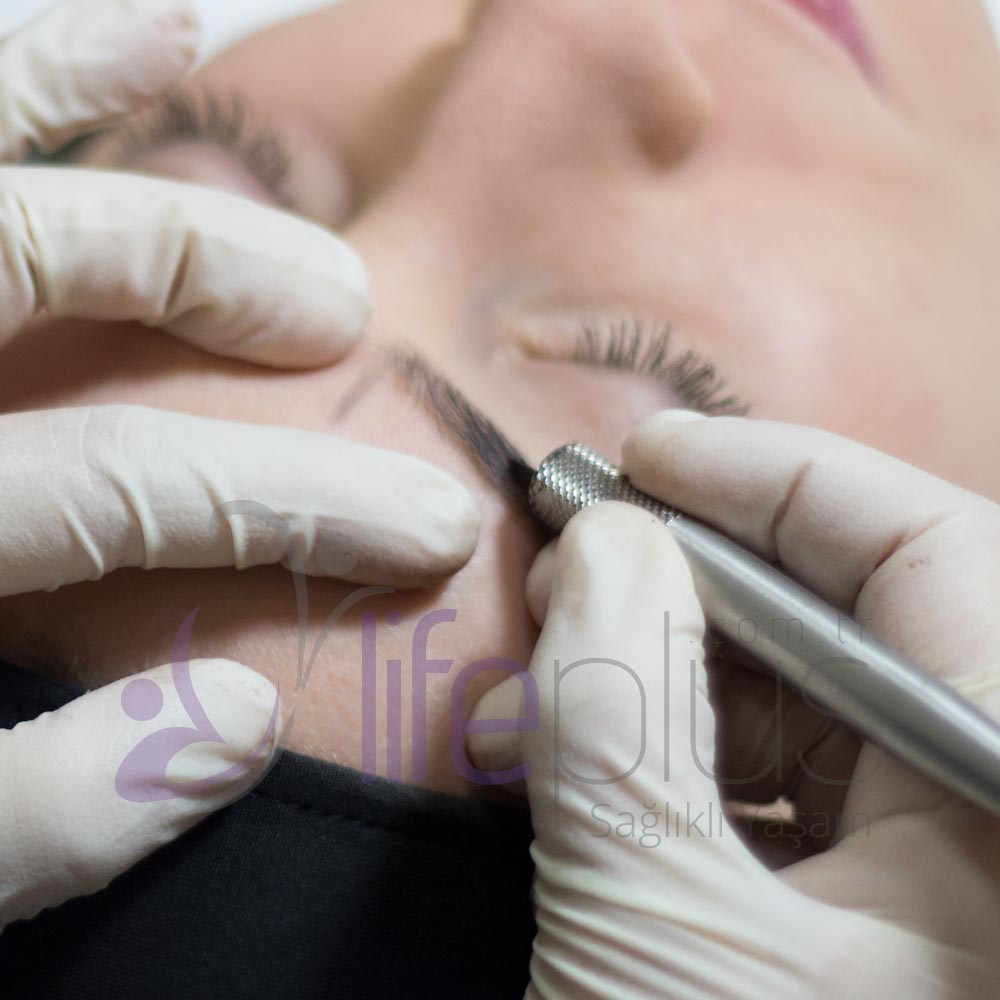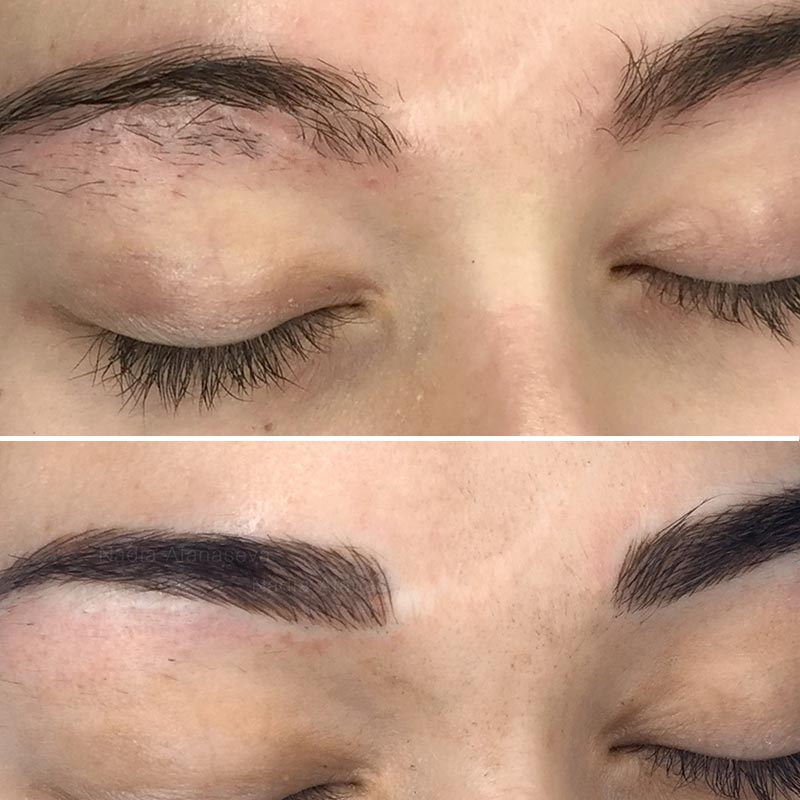Microblading
Microblading is a procedure in which a natural dye made of natural minerals and plant based pigments is injected into the skin by the microblade pen and single use needles. It is a very old practice. It was invented by Japanese tattoo artists. It came to being in the pursuit of drawing identical lines to the natural eyebrow hair.
- Microblade pen: Its main function is to grip the needle firmly and allow easy control over it.
- Microblade needle: It is designed to draw thin and perfect lines. They come in different sizes. It is essential that the needle is sterile and used once for each patient.
- Microblade dye: Dyes containing natural minerals and plant based pigments. Usually they stay where they are applied, they do not spread out. The body processes the dye completely in 1 – 1.5 years and it disappears completely. It is essential to use dyes approved by the Ministry of Health and that passed dermatologic tests.
Microblading Techniques,
- Microblading 3D Hairstrokes, A Natural Look.
- Permanent Micro Point, A method implemented by applying micro points, especially used in cases which hair implants is not necessary.
- Permanent Micro Simulacrum, A method implemented by applying micro shade.
- The most widely used is the 3D technique. The other methods are supplementary methods for a more natural look.
FAQs
Who can not have microblading?
- Pregnant women,
- People with bleeding or clotting disorders,
- People on blood thinner medication,
- People with mental disorders,
- People with infections in the procedure area (including zost and psora),
- People receiving chemotherapy or radiotherapy; before or after treatment session,
- People with moles in the microblading area,
- People with albinism,
- People with visible capillary vessels in the microblading area.
People with diabetes, haemophilia or AIDS should have the procedure carried out under the supervision of a doctor.
Reasons for discoloration after microblading
- Low quality dye,
- Type of skin (Dyes fade quicker on oily skin),
- After the procedure a thin layer of scab forms. It should be cared for with the recommended cream and the scab should not be peeled. If it is, the dye does not last as long as it normally does.
- Excessive sunbathing or solarium fades the dye quicker. Microblading area should be protected from UV rays. SPF 30 – 50 sunscreen should be applied before sunbathing.
- The dye not being applied to the targeted skin layer.
Microblading averagely lasts 1 year.














